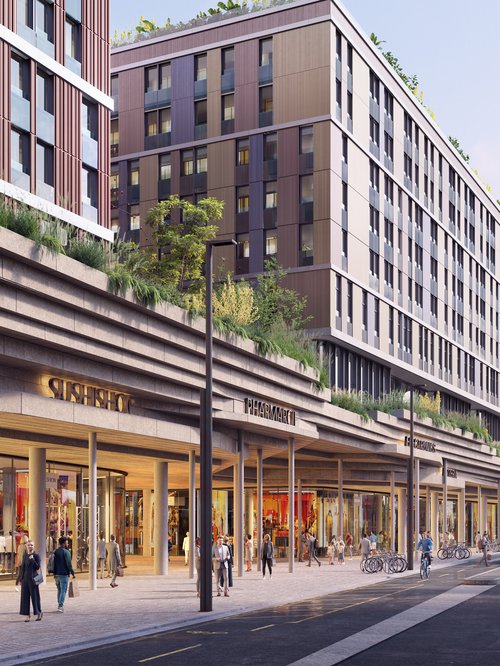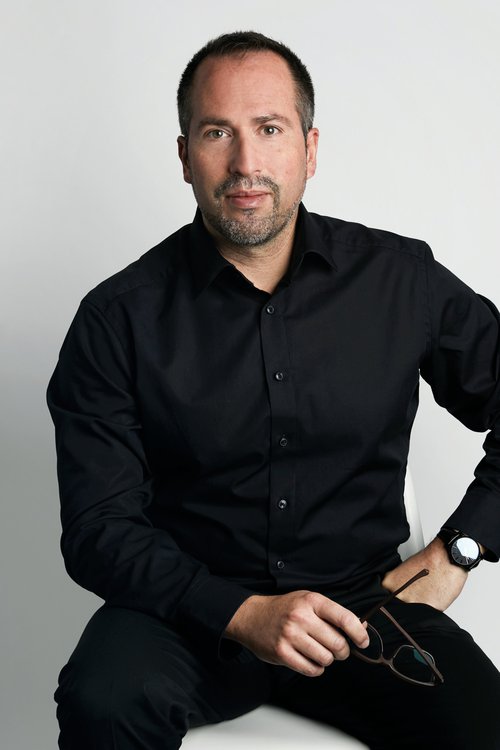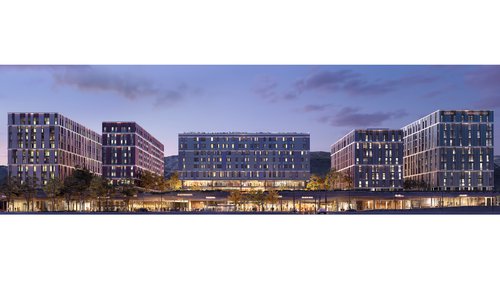
The Quartier de l’Étang is an exemplary project in terms of energy and ecology, built around a simple idea: ensuring the best quality of life for the greatest number of people.
Read the interview with Daniel Grosso, Associate Architect, in the INSA magazine's business section: see the article
A former industrial wasteland at the gates of Geneva, the Quartier de l'Étang embodies urban renewal. A benchmark in terms of energy and ecology, composed of 6.6 hectares dedicated to nature, and the result of numerous consultations, the Quartier de l'Étang was built around a simple idea: guaranteeing the best quality of life for as many people as possible. In addition, it’s close to many major roads and the airport. With its 870 homes, school, residences, recreational and sports areas, three hotels, offices, shops and transport network, it is a real city within the city. The district is made up of seven blocks divided into 3 hubs (public, residential and business). Block A "Les Atmosphères" is the showcase and the emblem of the district. It is structured in two sections: an urban base of four levels and five areas that emerge, containing the upper floors. This dynamic business centre will offer a wide variety of quality services and facilities. It includes three hotels, a student residence, a serviced residence, as well as a commercial and leisure area with well-known brands, a food court, offices and temporary events. “Les Atmosphères" has a real buzz around it, it’s where people the working population and the residents meet. Thanks to its commercial and leisure spaces and its varied range of restaurants, employees will mingle with residents, creating a real synergy between the two groups.
This project, the largest real estate operation in Switzerland today, led us to conceptualise and develop a programmatic, intergenerational and social mix of buildings, offering a new experience for users and visitors. Our objective was to create an identity and image strong enough to carry the whole area. We also had to include a high degree of flexibility in the surfaces to allow for customised finishes and find constructive solutions to develop the underground commercial areas. And finally, the landscaping work had to create quality living spaces those using the site.
Initially, we did a lot of thinking about the identity and expression of this project. We quickly realised that the best aesthetic and graphic solutions required dressing the buildings with a metal case, using a ribbed façade. These ribs form the link between all the buildings, while at the same time providing each building with its own identity by playing with light and shadow. Great care has also been taken in the landscaping, using hanging gardens to not only serve as a base for the building, but also reduce the heat island phenomenon and provide quality public spaces for users. The promontory has a patio and small courtyards while the hills, with their reliefs, blend into a diverse microcosm. The mineral plateau on which the shopping centre emerges and is where the food court is based. We have therefore managed to undertake this project with simple, economical and expressive means. CCHE defines itself as a multidisciplinary competence centre with a working method based on exchange and collaboration. Through a truly interactive approach with Urban Project, which is in charge of the development of the district, the project has been able to draw on the respective contributions of each party to create a project marked by quality, both from an architectural and a landscape point of view.

